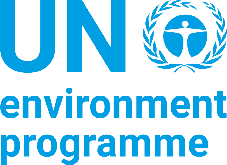Food is everything.
Not just for obvious reasons like keeping ourselves alive. It also brings families and friends together, gives pause in a day, frames celebrations and establishes traditions. Many would say that food adds value to life.
But the way we produce food is dangerous – and even deadly.
Ground-level ozone
Agriculture is a predominant source of human-caused methane emissions, with livestock farming and rice cultivation as the main causes.
Methane contributes to ground-level ozone, a hazardous air pollutant – exposure to which causes 472,000 premature deaths every year. It is also a powerful source of greenhouse gas. Although it is a short-lived climate pollutant, remaining in the atmosphere for about 12 years, molecule-for-molecule, methane is more than 20 times as potent a greenhouse gas as carbon dioxide.
Methane emission
Livestock emissions – from gastroenteric emissions and manure – account for more than 30 per cent of human-caused methane emissions . Population growth, economic development and movement toward urban areas have stimulated unprecedented demand for animal-sourced foods. This demand is anticipated to increase by up to 70 per cent by 2050 , as the global population approaches 10 billion.
Globally, rice cultivation accounts for 10 per cent of all agricultural greenhouse gas emissions. Grown mainly in rice “paddies” – essentially, flooded fields – water stops oxygen from penetrating the soil, creating ideal conditions for methane-emitting bacteria.
Global warming and food insecurity
Agriculture not only contributes to climate pollution. It also suffers the consequences in both the near and long term.
Ozone reduces crop yields, with projected annual staple crop losses of up to 52 million tonnes by 2030. And research suggests that the levels of CO2 anticipated in the future will cause loss of nutritional value, meaning that ozone pollution is a serious threat to global food security.
“Food security has never been so important,” cautions Martial Bernoux, Senior Natural Resource Officer at the UN Food and Agriculture Organization. “With the COVID-19 pandemic, governments are struggling to keep food supply chains alive while protecting the most vulnerable.”
Opportunity for positive change
The flipside to the role it plays in affecting climate change, is that agriculture offers an opportunity to mitigate it.
“Rethinking our approaches to agricultural cultivation and livestock production, embracing new, efficient technologies and shifting towards plant based diets and alternative sources of protein will be the only way to reduce climate pollutants and CO2emissions – and the only way the world can reach its 1.5°C climate change target,” says James Lomax, Food Systems and Agriculture Advisor at the UN Environment Programme.
Initiatives include reducing emission intensity by optimizing animal output. This means providing animals with more nutritious feed so that they are larger, healthier and more productive – effectively, producing more with less. There is also experimentation with alternative types of feed that would ideally reduce the methane produced by cows; and managing manure more efficiently by covering storage, composting or using it to produce biogas.
When it comes to staple crops like paddy rice, experts recommend alternate wetting and drying approaches that could halve the emissions . Rather than allowing continuous flooding of fields, paddies are irrigated and drained, two to three times throughout the growing season, limiting methane production without limiting yield and, because it requires one third less water, it is also more economical. In countries such as Vietnam – where 17 per cent of national greenhouse emissions are the result of rice growing – this type of change could have a substantive impact.
In terms of global food security, reducing ground-level ozone concentrations is also a way to increase grain yields while avoiding the environmental degradation that occurs with the use of chemical fertilizers.
Where do we go from here
Acknowledging the role of agriculture in climate change, the Koronivia Joint Work on Agriculture drives transformation of agricultural and food systems, addressing the synergies and trade-offs between climate adaptation and mitigation, and agricultural productivity. It is also working to mainstream agriculture into UN Framework Convention on Climate Change processes and will hold its next round at the UN Climate Change Conference (COP26), next year.
Insists Bernoux, “More than ever, we need solutions to build back better national economies and achieve more resilient food systems, while also tackling unresolved threats to natural resources.”
In the meantime, on 7 September the world celebrates the first ever International Day of Clean Air for blue skies. This is a global call to find new ways of doing things, to reduce the amount of air pollution we cause, and ensure that every one, everywhere can enjoy their right to breathe clean air.
For more information about agriculture and clean air, contact Tiy Chung: [email protected]
